HashiCorp Certified: Consul Associate Certification
Explain Consul Architecture
Basic Consul Architecture
In this lesson, we’ll explore the core technical components of Consul: agent deployment patterns, operational modes, data center concepts, and the underlying protocols.
Consul Agent Deployment
The Consul agent is a lightweight, long-running daemon that enables service discovery, health checking, and key/value storage on any host. Thanks to its platform-agnostic design, you can run the agent in various environments:
| Environment | Examples |
|---|---|
| Local | Laptop |
| On-Premises | Physical server, VMware, Hyper-V |
| Public Cloud | AWS, Azure, GCP |
| Virtualized | VMware VMs, Hyper-V VMs |
| Containers | Docker, Kubernetes pods |
| Operating Systems | Linux, macOS, FreeBSD, Solaris, Windows |
Running consistent agent binaries across your infrastructure provides a unified control plane for service registration and health monitoring.
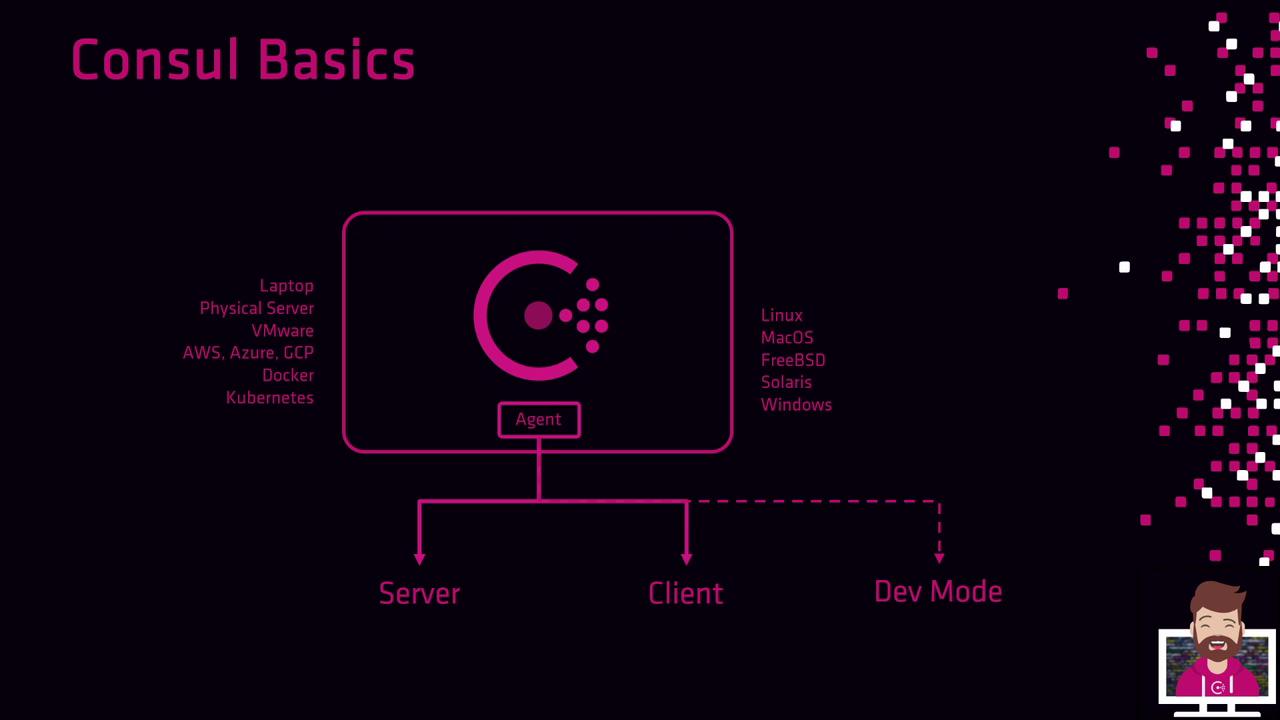
Agent Operational Modes
A single Consul binary supports three modes—server, client, and dev—configured via JSON files or CLI flags at startup.

Server Mode
Consul servers form the cluster’s control plane. Their key responsibilities include:
- Cluster state & membership: Track all nodes and maintain a consistent cluster view.
- Service registry: Store service entries and respond to DNS/HTTP API queries.
- Quorum management: Elect a leader and provide high availability via Raft consensus.
- Data center gateway: Forward queries between DCs in multi-DC deployments.
Without a quorum of servers, the Consul cluster cannot operate.
Client Mode
Client agents run alongside application services (e.g., web servers, databases) and handle:
- Service registration: Register local services with the server cluster.
- Health checks: Execute and report checks, influencing traffic routing.
- API forwarding: Relay DNS/RPC requests to servers.
- LAN gossip: Participate in local failure detection and membership updates.
- Stateless operation: Join or leave the cluster without persistent state.
Dev Mode
Dev mode is intended for local testing and demonstrations—never production.
Warning
Dev mode uses a single in-memory server without TLS or disk persistence. All data is lost on shutdown.

Consul Data Centers
A data center in Consul represents a logical cluster co-located in one physical region or network. All members within a DC use the LAN gossip pool for low-latency communication.
Single Data Center
Key traits:
- One cluster in a single region
- Private network (no public internet)
- LAN gossip only
- Low-latency, high-bandwidth communication
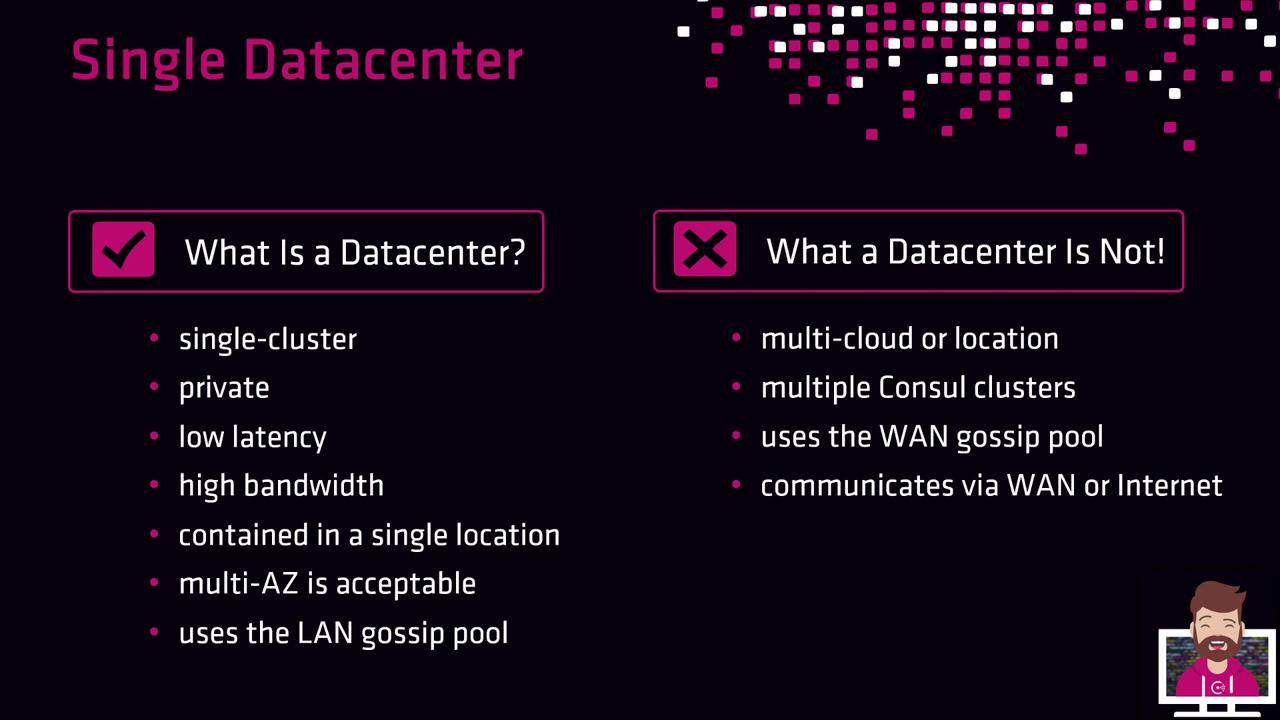
Multi-Data Center
Federated Consul DCs allow cross-DC service discovery and failover. Each DC remains an independent cluster, communicating over WAN gossip or mesh gateways:
- Multi-cloud / multi-region deployments
- Physical DCs in different locations
- Multiple clusters within one site
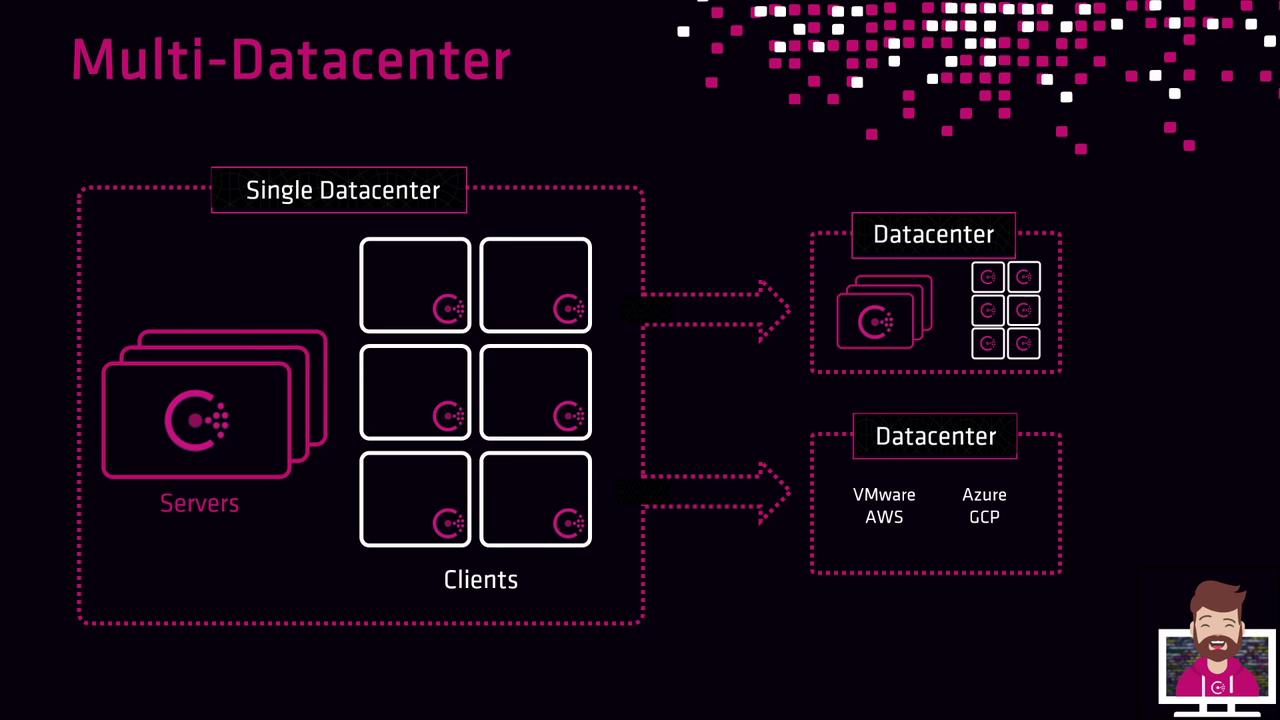
Typical scenarios:
- On-prem primary DC with a cloud-based failover DC
- Federated clusters across AWS, GCP, and Azure
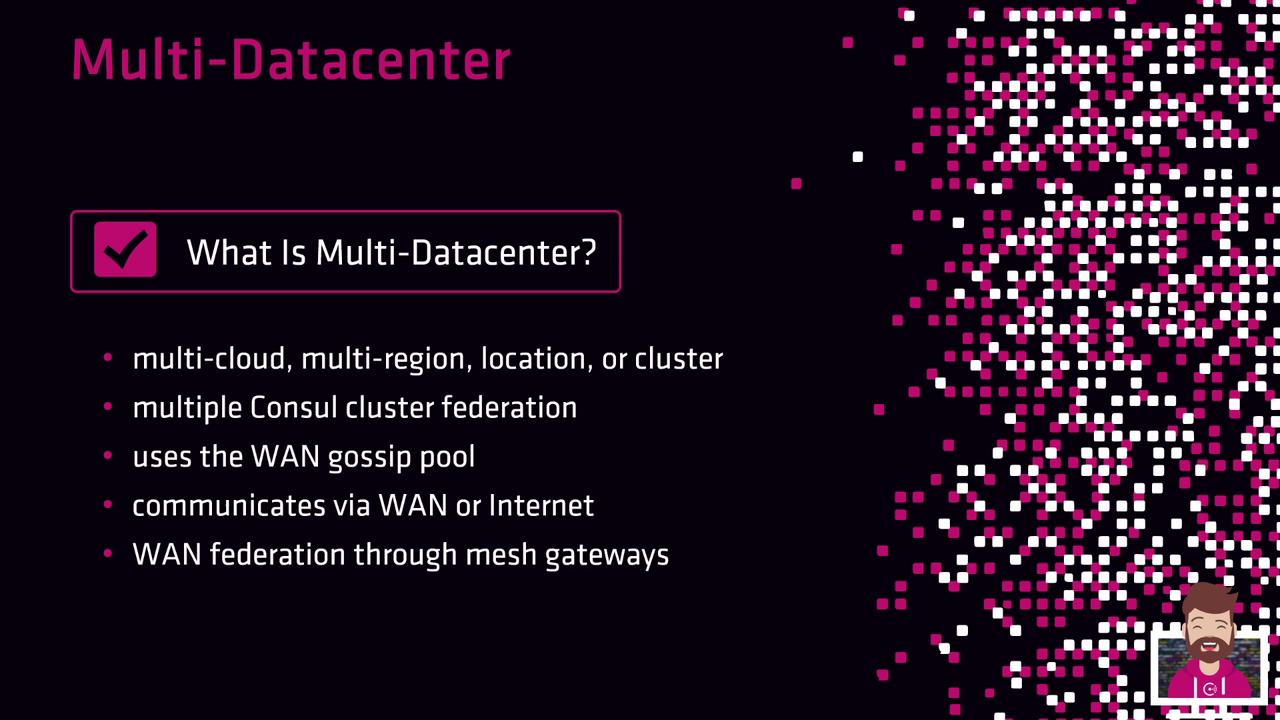
Key Protocols
Consul’s distributed architecture relies on two core protocols:
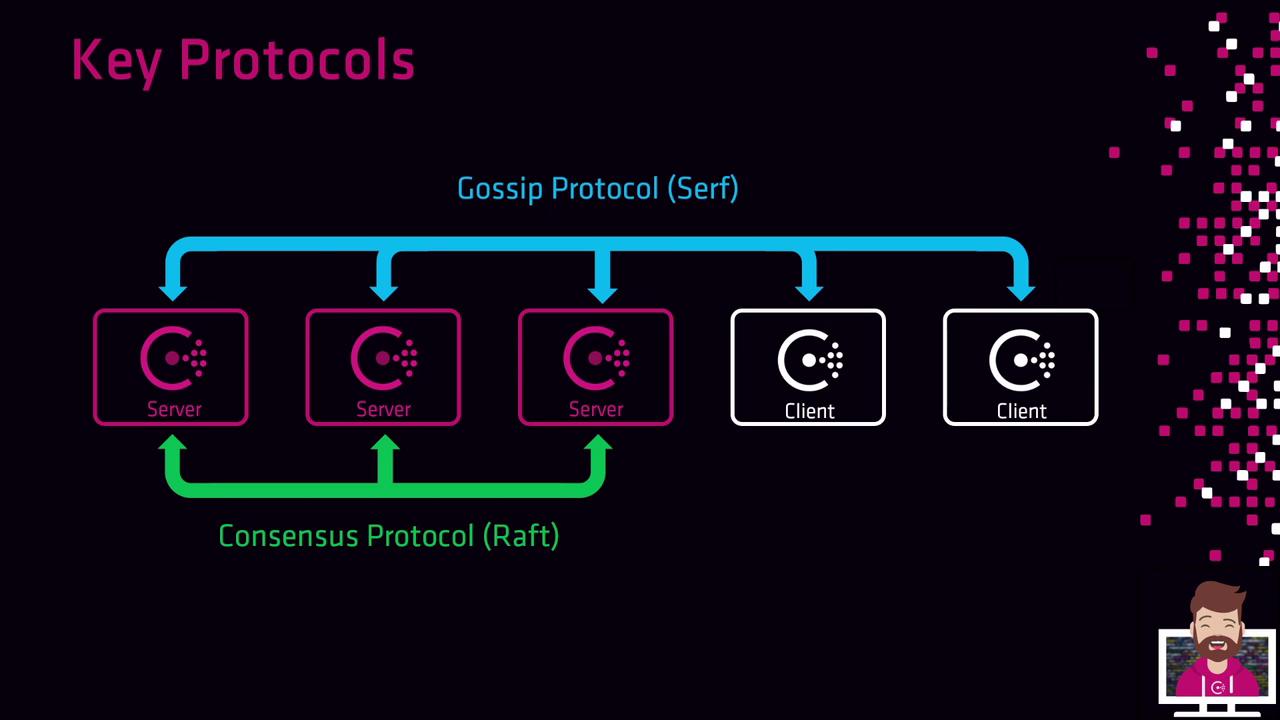
| Protocol | Purpose |
|---|---|
| Raft | Server-only consensus: leader election, log replication, and quorum management |
| Serf (Gossip) | Cluster membership, failure detection, and message broadcast over LAN and WAN |
Understanding these components is critical for designing, deploying, and managing a resilient Consul architecture optimized for service discovery and health monitoring.
Links and References
Watch Video
Watch video content